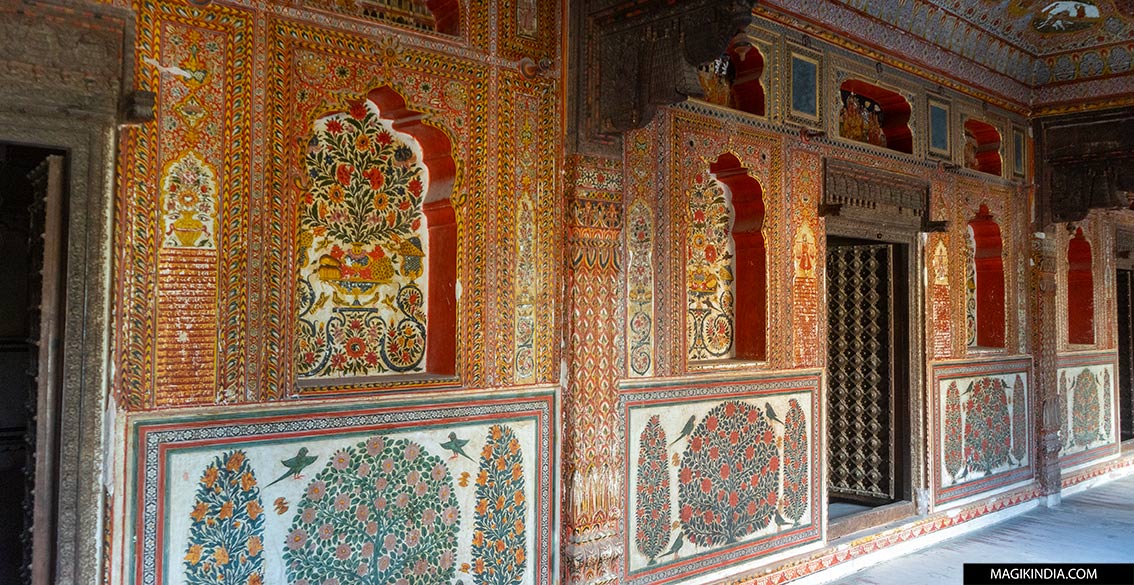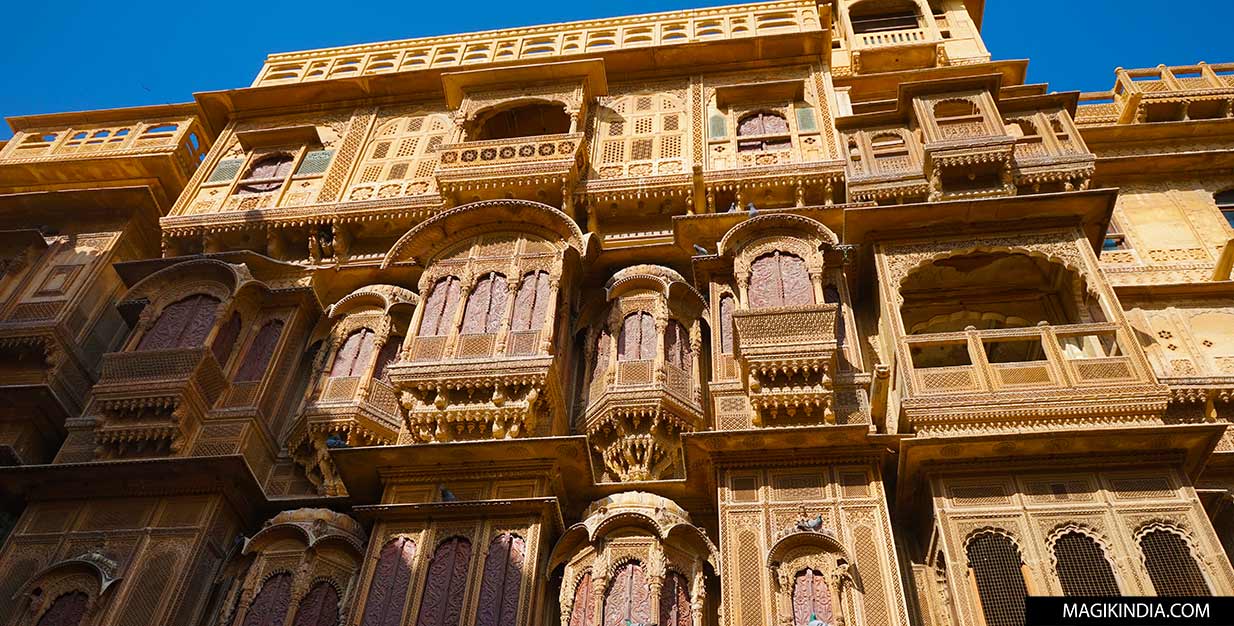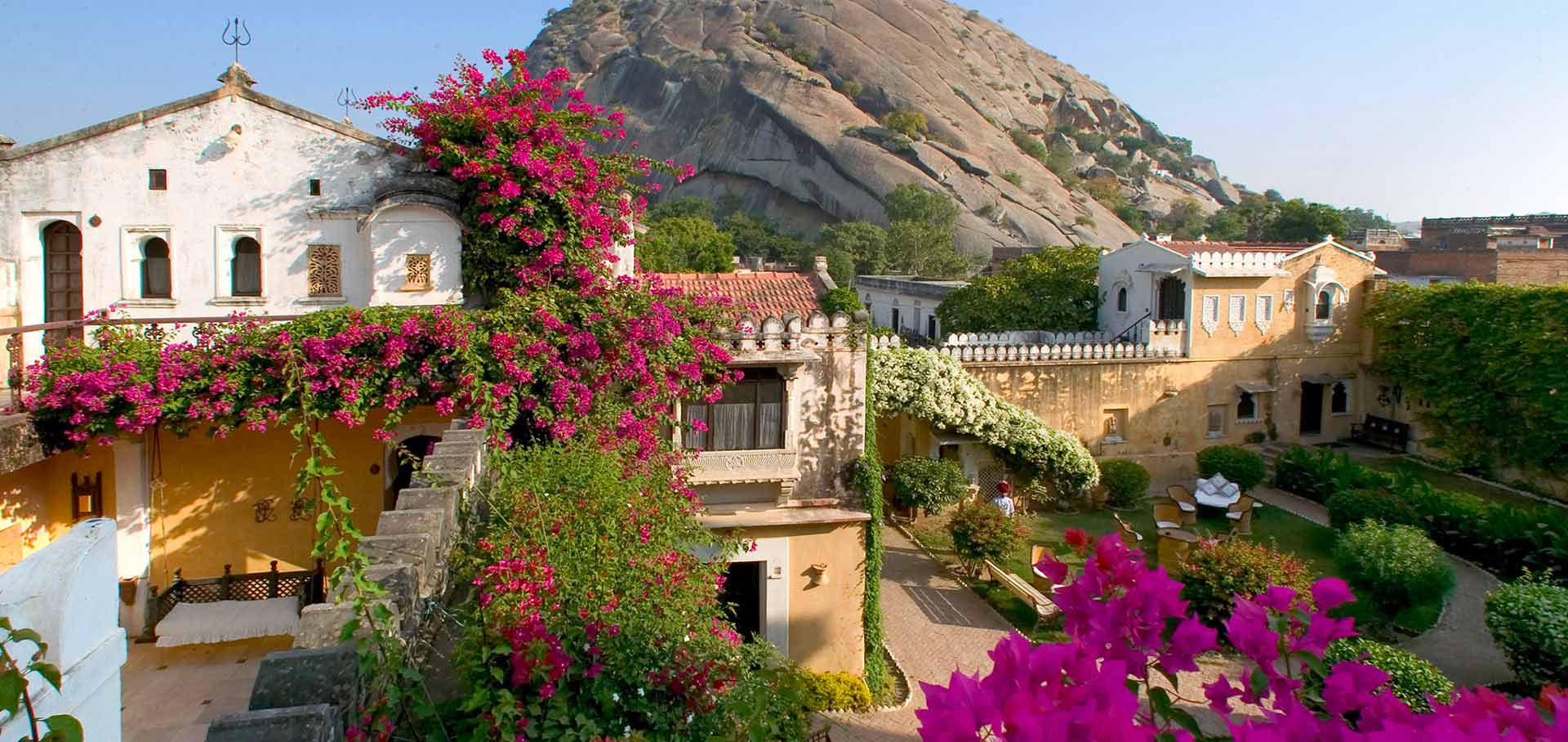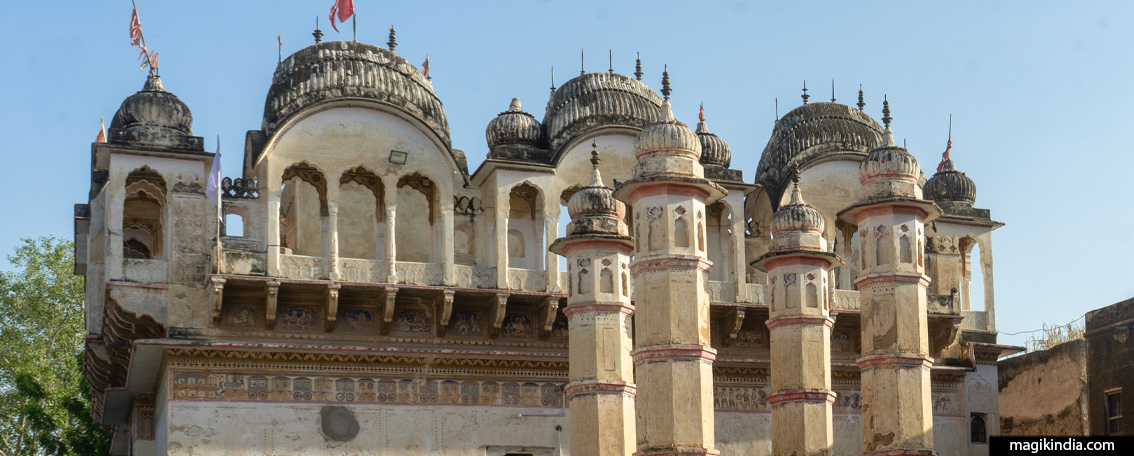
Kuas, the persan wells of Shekhawati
In semi-desert areas like Shekhawati, in northern Rajasthan, water management is vital. Thus, in addition to stepwells and other reservoirs, numerous “kuas” (pronounced kooa) have sprung up throughout the region. With their Persian-style towers adorned with exquisite frescoes, these unique wells reflected the opulence of wealthy Marwari merchants in the 18th and 19th centuries. As community hubs, they also served as caravanserai for half a century on the trade route across the Thar Desert.
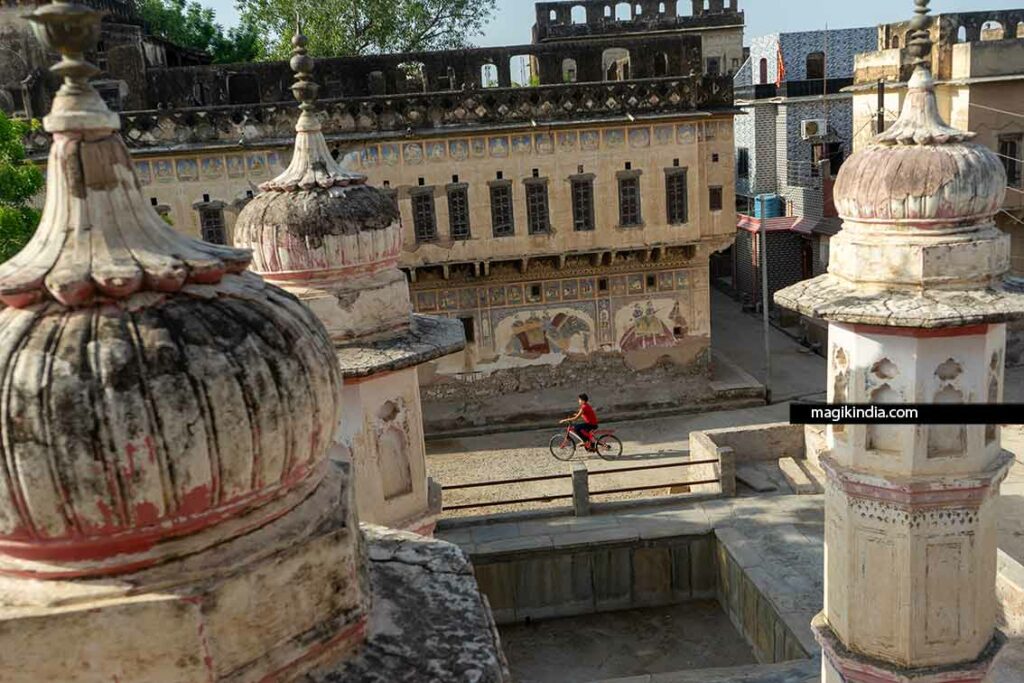
In India, as in most traditional societies, water is considered sacred. It is one of the five Panch Maha-bhuta or five elements of nature, the other four being fire (Agni), air (Vayu), ether (Akash), and earth (Prithvi). Rivers are also deified, and Hindu temples in ancient India always featured a “kund,” a water reservoir where rituals and ablutions took place.
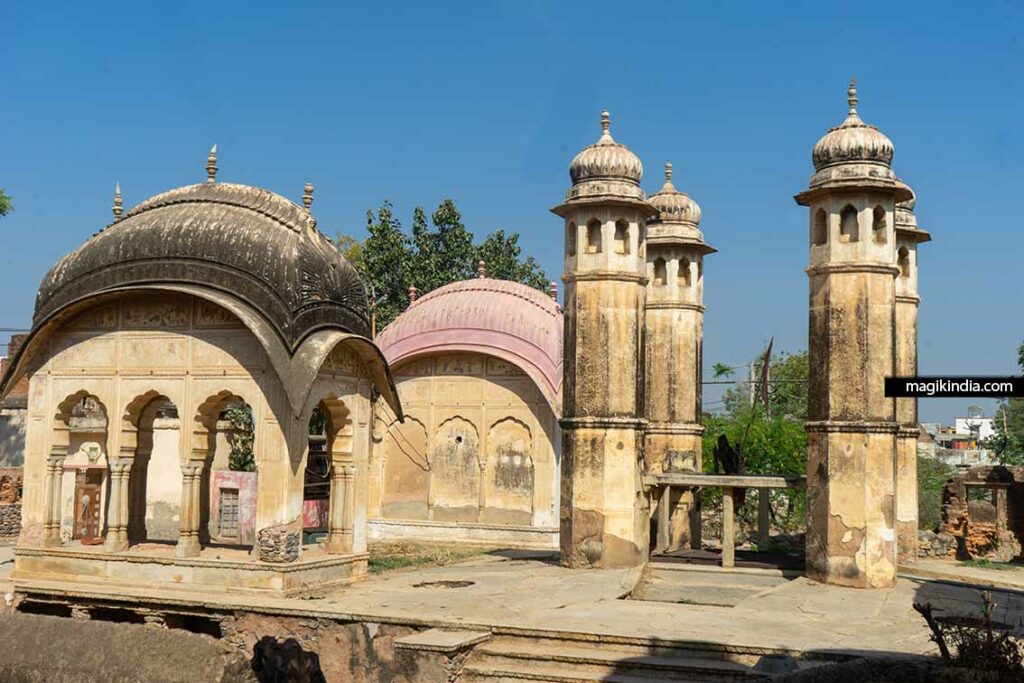
In the Shekhawati region, there are several types of water points: temple kunds, step wells (baori) and “kuas” which are the subject of this article.
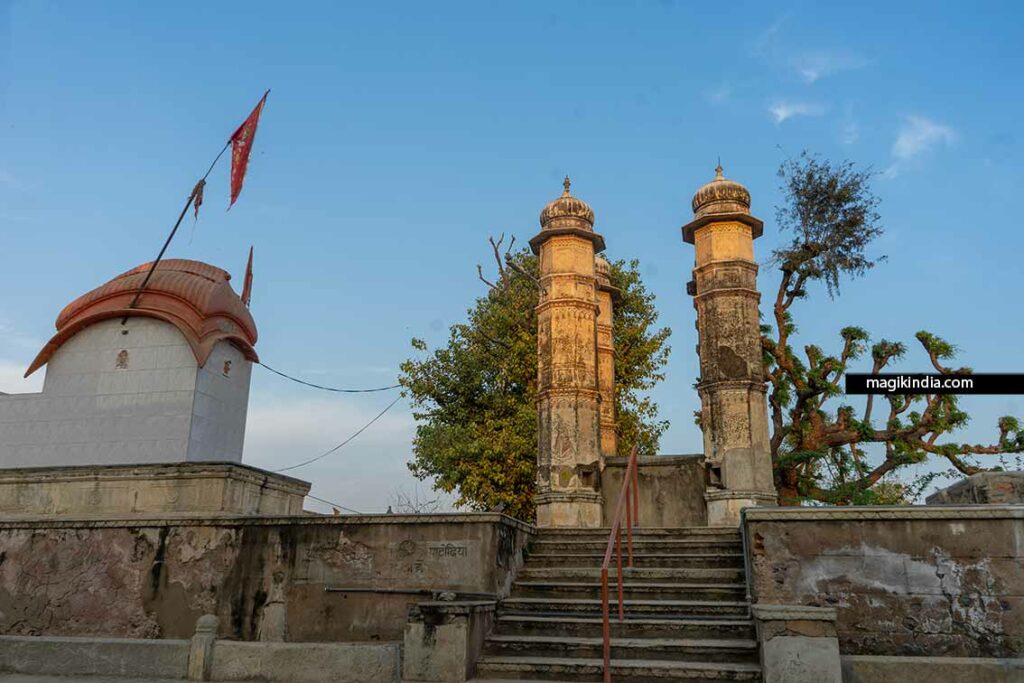
The kua is unique to the Shekhawati region. The dimensions of these wells vary throughout the region, but each has the same characteristic: placed on a raised platform, they are topped by two or four minaret-style towers, an architecture that is absolutely unique in India.
It should be remembered that Rajasthani architecture was heavily influenced by the Rajput school, which combined elements of Mughal (Islamic) and Hindu styles.This specificity was reproduced on the kuas, with minaret-like towers painted with frescoes depicting Hindu mythology.
These wells were commissioned by the banias, Marwari traders who made their fortune on the new trade route passing through the region (see bottom of page).
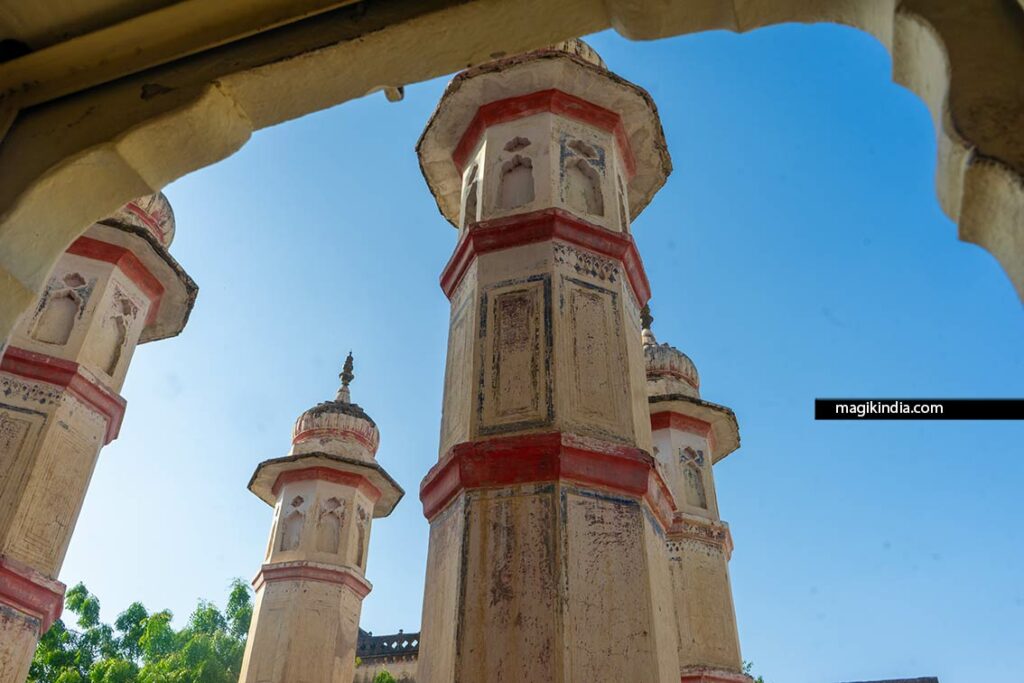
The four-towered wells indicated that they were for public use with two pulleys to be more efficient and the two-minaret wells were for private use.
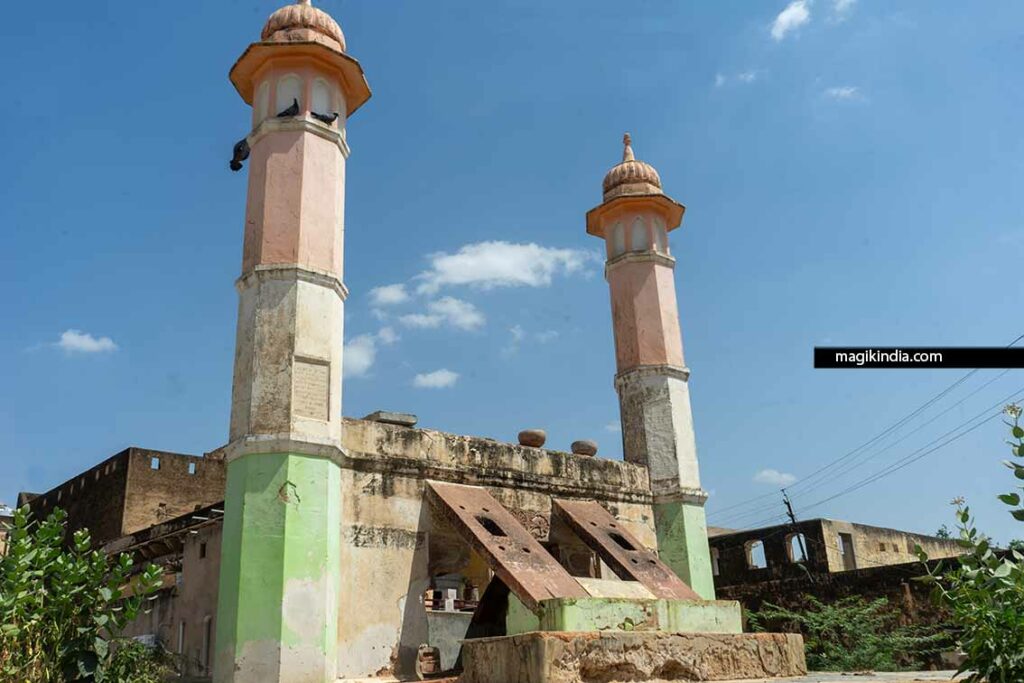
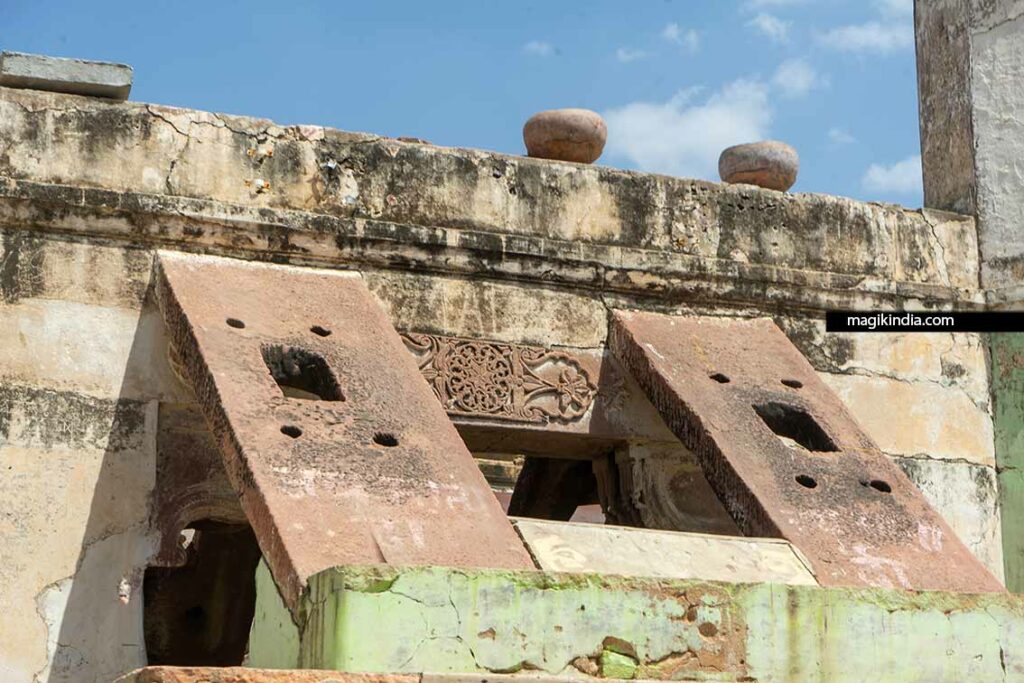
The most elaborate kuas have “chhatris,” that is, rectangular semi-open pavilions, as well as a sanctuary, most often dedicated to Hanuman ji, the monkey god of the Hindu faith. Why Hanuman? I searched for a long time before finding an answer from Mr. Sham Singh ji, a renowned guide from the Shekhawati region, now retired. Hanuman symbolizes strength, courage, and devotion. Before digging the well, a temple to Hanuman was built to protect the workers and give them courage to work.
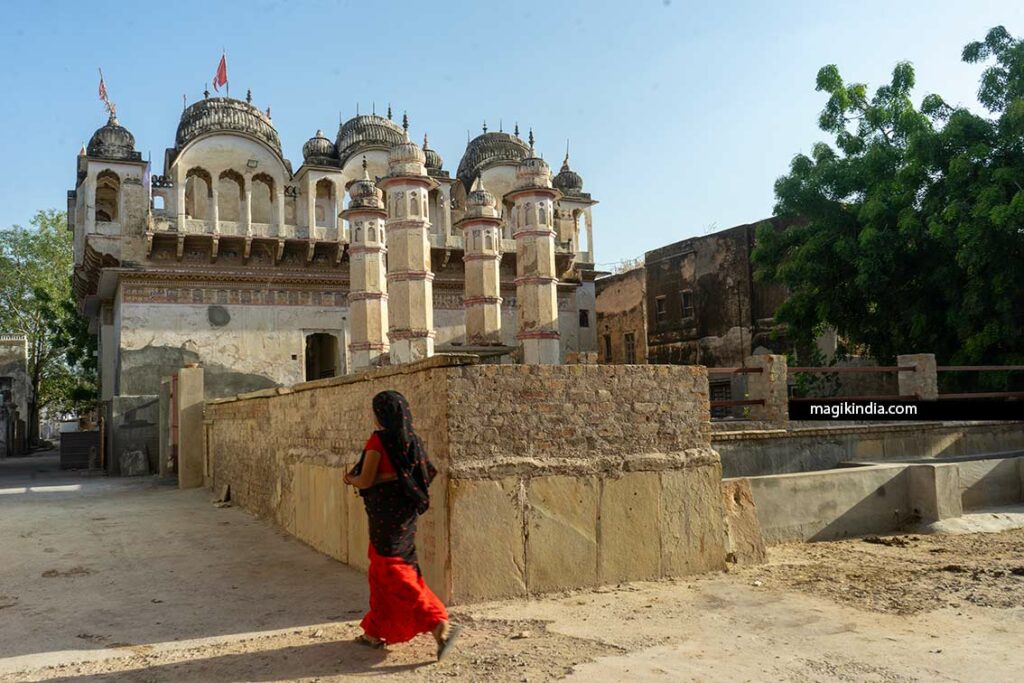
Thus, as we can see, the kua wells of Shekhawati served not only for water management, but were also associated with religious rituals. They also functioned as community hubs, where residents gathered and festivities took place.
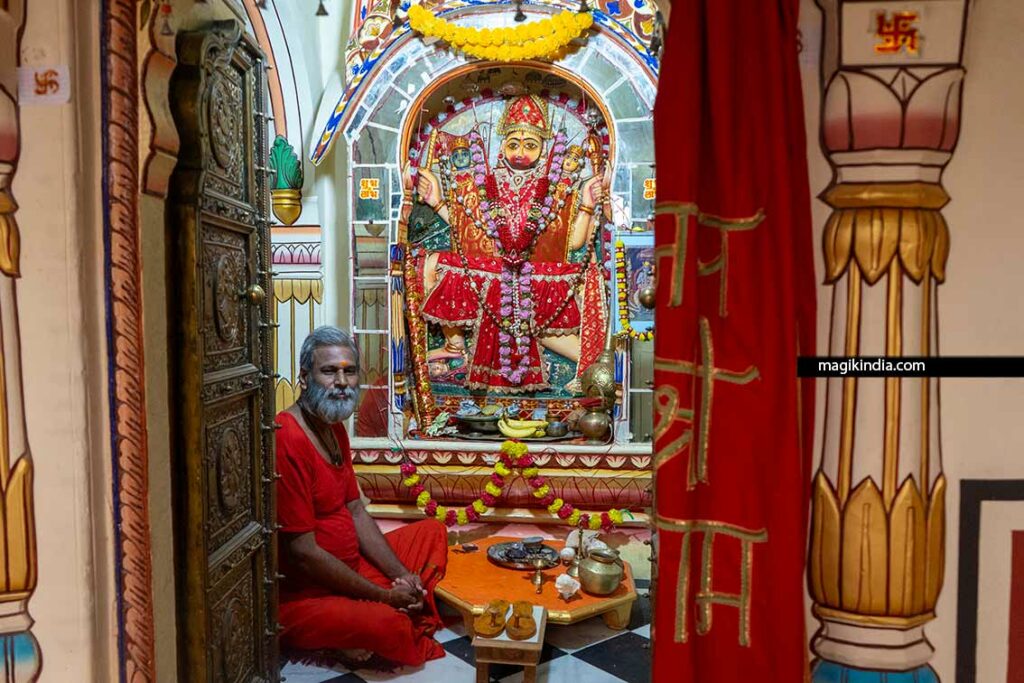
In the years 1740 to 1800 CE, these kuas had another function and not the least, they served as caravanserai on the new trade route established by the Thakurs (lords) of Shekhawati.
If you’ve read my article on the Shekhawati region, I explain how, during the second half of the 18th century, the Thakurs of Shekhawati diverted the Delhi-Sindh trade route, which normally passed through Ajmer, Bikaner, and Jaisalmer, by drastically reducing taxes on trade through their territories. This made the entire region rich.

The kuas, like the magnificent palatial residences of Shekhawati, are mostly abandoned; few people really pay attention to these small wonders that are right before their eyes. A UNESCO World Heritage Site designation would help safeguard this precious and unique heritage.
Shekhawati is one of our favourite destination. We invite you to come and discover the other treasures of this region accompanied by a cultural guide. See you soon!
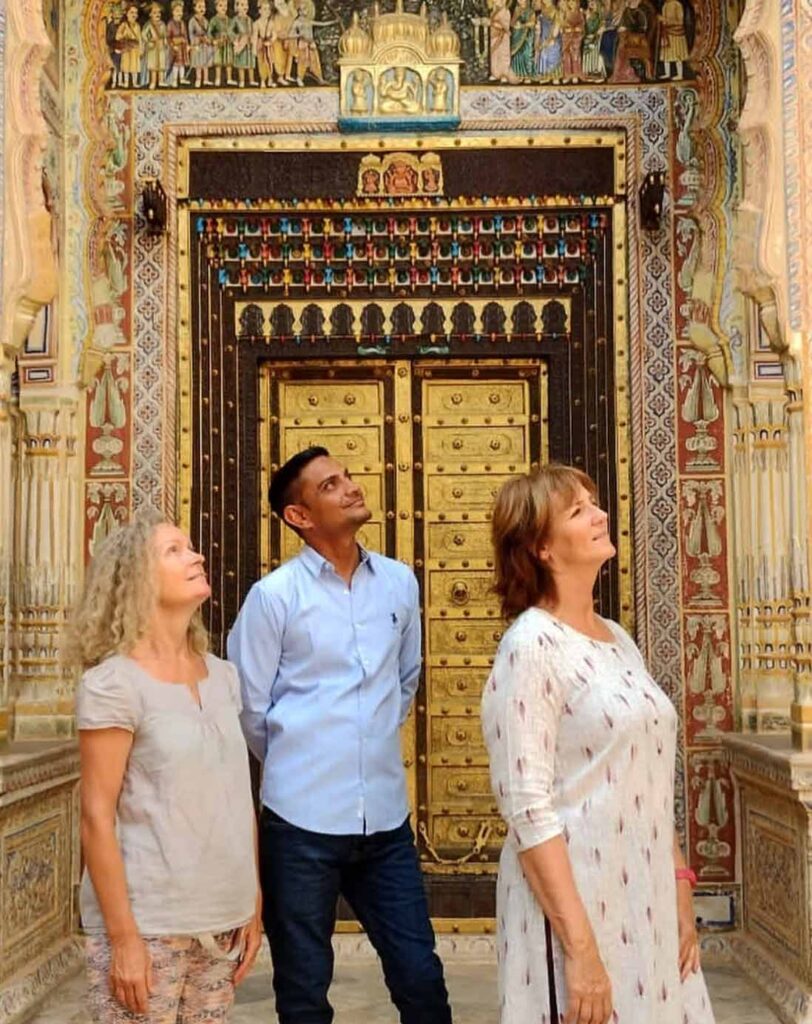
Dinesh Sharma, a native of Nawalgarh, is one of the best official cultural guides of the Shekhawati region and the co-director of MATHINI TRAVEL. With over 10 years of experience in the tourism industry, there’s no corner of Shekhawati that escapes him. He’s eager to share his passion for this unique region of India with you.
Whatsapp: +91 9509122902

